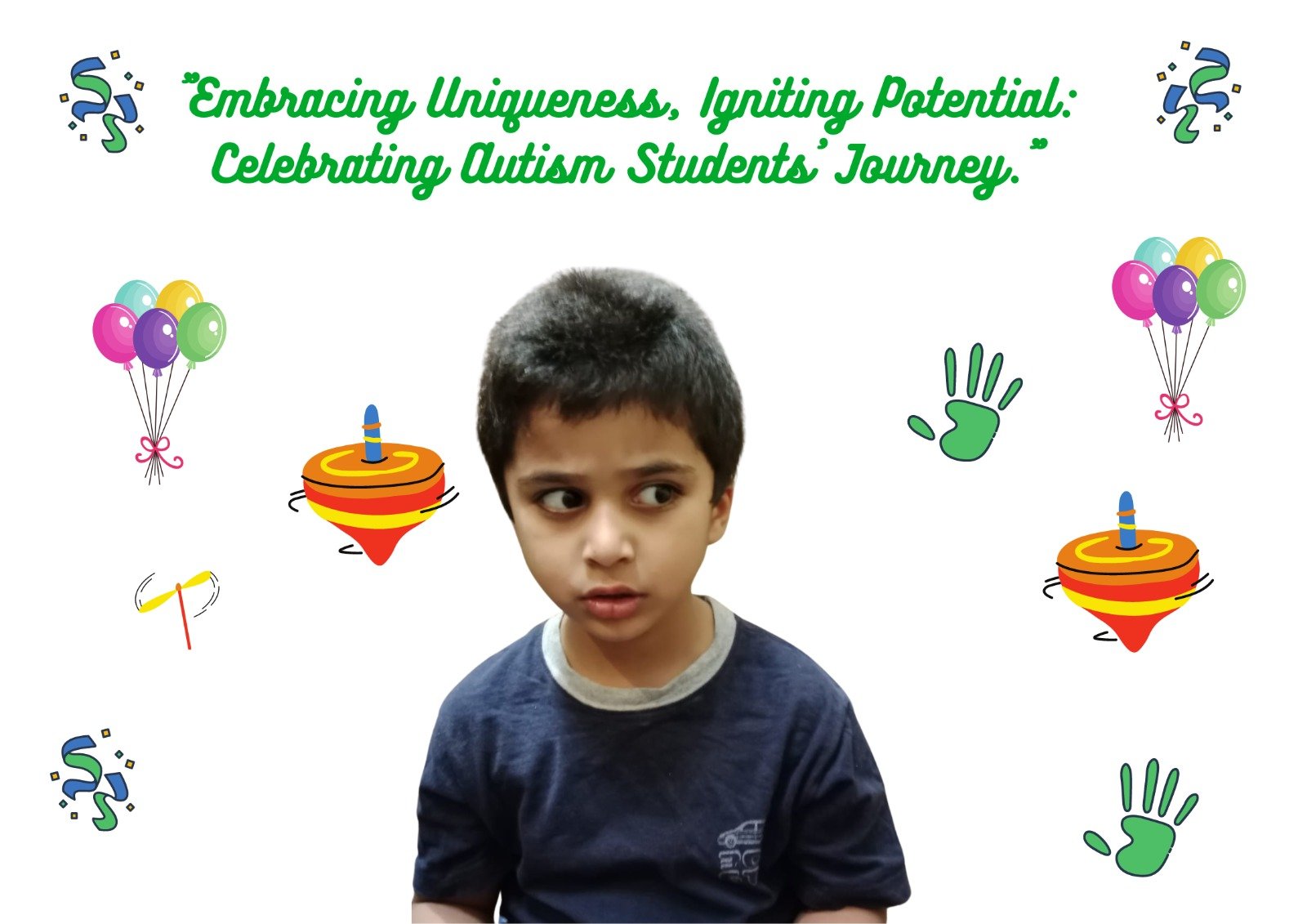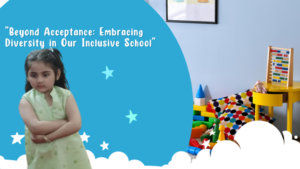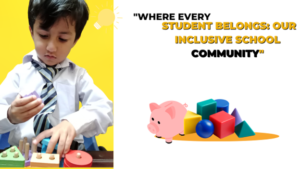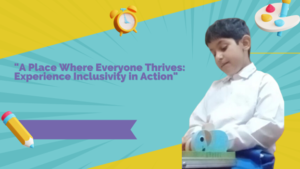Table of Content
- Introduction
- Inclusive of education
- Inclusive Schools
- Inclusive education examples
- Inclusive education for students with disabilities
- Inclusive education history
- Inclusive Schools near me
- Conclusion
Introduction:
Inclusive education is not just a concept; it’s a commitment to fostering a learning environment where every student, regardless of their background or abilities, feels valued and supported. At Gateway to Success School, we take immense pride in our dedication to inclusive practices, striving to create an educational landscape that celebrates diversity and empowers all learners to reach their full potential. In this blog post, we will delve deep into the essence of inclusive education, exploring its definition, historical context, real-life examples, and how it manifests at our esteemed institution.
Defining Inclusive Education:
Inclusive education transcends mere classroom settings; it’s a philosophy that embraces the idea of diversity and equity in all aspects of schooling. At its core, inclusive education aims to provide every student with meaningful opportunities to learn, grow, and succeed, irrespective of their background, abilities, or differences. It emphasizes collaboration, respect, and individualized support to ensure that all learners feel included and valued within the school community.
Example of Inclusive Schools:
Across the globe, numerous schools have embraced the principles of inclusive education, serving as beacons of inclusivity and diversity in their respective communities. One such exemplary institution is [Insert Example Inclusive School Name], located [Insert Location]. This school embodies the essence of inclusive education by implementing a wide range of strategies and initiatives to cater to the diverse needs of its student body. From personalized learning plans to accessible facilities and inclusive curricula, [Example Inclusive School Name] serves as a shining example of how inclusivity can thrive within educational settings.

Inclusive Schools Near Me:
For families seeking inclusive educational environments for their children, it’s essential to explore schools that prioritize diversity and inclusion. In WAPDA TOWN LAHORE, several schools share our commitment to inclusive practices, providing a nurturing and supportive environment for students of all abilities.
Inclusive School Education for Students with Disabilities:
At Gateway to Success School, we firmly believe that every student, regardless of their abilities, deserves access to quality education. Our inclusive approach extends a warm welcome to students with disabilities, offering tailored support and accommodations to meet their unique learning needs. Whether it’s through assistive technologies, specialized instruction, or individualized learning plans, we are dedicated to ensuring that every student thrives academically, socially, and emotionally.
Inclusive Education History:
The roots of inclusive education can be traced back to the mid-20th century when pioneers in the field began advocating for the integration of students with disabilities into mainstream educational settings. Prior to this movement, students with disabilities were often marginalized and excluded from traditional schools, relegated to separate institutions or denied access to education altogether. However, with the advent of inclusive education, a paradigm shift occurred, emphasizing the rights of all learners to equitable educational opportunities.
Over the years, inclusive education has evolved into a global movement, driven by legislative mandates, educational research, and grassroots advocacy. Landmark legislation such as the Individuals with Disabilities Education Act (IDEA) in the United States and the United Nations Convention on the Rights of Persons with Disabilities (CRPD) have played pivotal roles in promoting inclusive practices and dismantling barriers to education.
At Gateway to Success School, our journey towards inclusive education has been marked by continuous learning, growth, and collaboration. By embracing diversity, fostering empathy, and promoting a culture of inclusion, we strive to create a learning environment where every student feels empowered to succeed.
Inclusive education is not merely a trend; it’s a transformative approach that benefits students, educators, and the entire school community. At Gateway to Success School, we recognize the profound impact of inclusive practices and are committed to fostering an environment where every individual thrives. In this segment, we’ll explore the myriad benefits of inclusive schools, delve into the essential duties of staff members in fostering inclusivity, and highlight some of the key therapies and interventions that support students with diverse needs.
Benefits of Inclusive Schools:
- Promoting Diversity and Acceptance: Inclusive schools celebrate diversity and create a sense of belonging for all students, regardless of their background or abilities. By fostering an environment of acceptance and understanding, inclusive schools cultivate a culture of empathy and respect among students and staff.
- Enhancing Academic Achievement: Research consistently demonstrates that inclusive education positively impacts academic outcomes for all students. When students with diverse abilities learn together in inclusive settings, they have access to varied perspectives, collaborative learning opportunities, and individualized support, which can lead to improved academic performance across the board.
- Developing Social Skills and Relationships: Inclusive schools provide students with ample opportunities to interact and form relationships with peers of different backgrounds and abilities. These social interactions help foster empathy, communication skills, and a sense of community, preparing students for success in an increasingly diverse world.
- Fostering Personal Growth and Self-Esteem: Inclusive education promotes a growth mindset and encourages students to embrace their unique strengths and challenges. By providing a supportive learning environment where all contributions are valued, inclusive schools empower students to develop confidence, resilience, and a positive self-image.
Staff Duties in Fostering Inclusivity:
- Creating a Welcoming Environment: Staff members play a crucial role in creating a welcoming and inclusive atmosphere within the school. This includes greeting students warmly, promoting positive interactions, and ensuring that all students feel valued and respected.
- Implementing Universal Design for Learning (UDL: Staff should employ UDL principles to design instruction and learning environments that accommodate diverse learning styles, abilities, and preferences. By providing multiple means of representation, engagement, and expression, teachers can effectively meet the needs of all learners.
- Collaborating with Specialized Professionals**: Inclusive schools often have multidisciplinary teams consisting of teachers, special educators, therapists, counselors, and other professionals. Staff members collaborate closely to develop and implement individualized education plans (IEPs) and support strategies tailored to meet the unique needs of each student.
- Promoting Positive Behavior Supports: Staff members should implement proactive strategies to promote positive behavior and prevent challenging behaviors. This may involve teaching social-emotional skills, implementing structured routines and visual supports, and providing consistent praise and reinforcement for desired behaviors.
- Facilitating Peer Relationships and Peer Support: Staff members can facilitate peer relationships by promoting inclusive activities, fostering peer mentorship programs, and teaching students strategies for befriending and supporting their peers with diverse needs.
Key Therapies and Interventions:
- Speech and Language Therapy: Speech and language therapists work with students to improve communication skills, articulation, language comprehension, and social communication abilities.
- Occupational Therapy: Occupational therapists help students develop fine motor skills, sensory processing abilities, and activities of daily living (ADL) skills necessary for academic and functional independence.
- Physical Therapy: Physical therapists assist students in improving gross motor skills, mobility, strength, coordination, and balance through targeted exercises and interventions.
- Behavioral Therapy: Behavioral therapists employ evidence-based strategies to address challenging behaviors, teach self-regulation skills, and promote positive social interactions and problem-solving abilities.
- Assistive Technology: Assistive technology specialists help students access the curriculum and participate in classroom activities by providing specialized devices, software, and accommodations tailored to their individual needs.
In conclusion, inclusive schools are not just beneficial; they are essential for fostering a diverse, equitable, and inclusive society. Through the concerted efforts of dedicated staff members and the implementation of effective therapies and interventions, inclusive schools like Gateway to Success School can create an environment where every student has the opportunity to learn, grow, and succeed. By embracing inclusivity as a guiding principle, we can pave the way for a brighter future for all learners, regardless of their abilities or backgrounds.
Conclusion:
Inclusive education is not just a lofty ideal; it’s a fundamental human right that lies at the heart of our educational philosophy at Gateway to Success School. Through our unwavering commitment to inclusivity, we aim to cultivate a learning community where diversity is celebrated, differences are embraced, and every student is given the opportunity to shine. As we continue to champion the cause of inclusive education, we invite you to join us on this transformative journey towards a more equitable and inclusive future. Together, we can break down barriers, build bridges, and pave the way for a brighter tomorrow for all learners.











